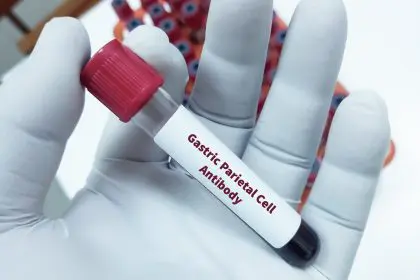Your body runs on blood like a car runs on fuel – without enough of it, everything starts breaking down. When blood levels drop too low, your organs begin struggling to get the oxygen and nutrients they desperately need to function properly. The scary part is that blood loss often happens gradually, with your body adapting to lower levels until suddenly you’re in real danger.
Many people dismiss the early warning signs as stress, lack of sleep, or just getting older. But recognizing these crucial symptoms could be the difference between a simple treatment and a medical emergency. Your body has sophisticated ways of telling you when something is seriously wrong – you just need to know how to listen.
Low blood count, medically known as anemia, affects millions of people worldwide and can develop from various causes including heavy menstrual periods, internal bleeding, poor nutrition, chronic diseases, or blood disorders. Regardless of the underlying cause, the symptoms remain remarkably consistent as your body struggles to cope with insufficient healthy red blood cells.
What happens when your blood runs low
Blood serves as your body’s transportation system, carrying oxygen from your lungs to every cell and tissue while removing waste products like carbon dioxide. Red blood cells contain hemoglobin, an iron-rich protein that gives blood its red color and enables it to carry oxygen efficiently throughout your circulatory system.
When blood levels drop, your heart has to work harder to pump the reduced amount of blood through your body. This increased workload can strain your cardiovascular system while your organs receive less oxygen than they need to function optimally. Your body tries to compensate by redirecting blood flow to vital organs like the brain and heart, which explains why many symptoms affect other parts of the body first.
The severity of symptoms often depends on how quickly blood levels drop. Gradual blood loss allows your body time to adapt, potentially masking symptoms until levels become critically low. Sudden blood loss creates immediate, severe symptoms that demand urgent medical attention.
The 5 warning signs your blood is dangerously low
- Extreme fatigue that won’t improve with rest: This isn’t ordinary tiredness from a busy day or poor sleep. When blood levels drop, your cells literally can’t get enough oxygen to produce energy efficiently. This creates a profound exhaustion that makes simple tasks feel overwhelming and doesn’t improve even after adequate rest or sleep. You might find yourself needing to sit down frequently, feeling weak during routine activities, or being unable to concentrate due to mental fatigue.
- Pale skin, lips, and nail beds: One of the most visible signs of low blood count is a noticeable loss of color in areas where blood flow is typically most visible. Your skin may appear washed out or grayish, while your lips lose their natural pink tone and become almost colorless. The insides of your eyelids and your fingernail beds also become pale, creating a stark contrast to their normal healthy pink appearance. Others may comment that you look sick or ask if you’re feeling well.
- Shortness of breath during normal activities: When your blood can’t carry enough oxygen, your body tries to compensate by making you breathe faster and deeper. Activities that never bothered you before – like climbing a flight of stairs, walking to the mailbox, or even talking for extended periods – suddenly leave you gasping for air. This happens because your lungs are working overtime trying to get more oxygen into your bloodstream, but there simply aren’t enough healthy red blood cells to transport it effectively.
- Rapid or irregular heartbeat: Your heart responds to low blood levels by beating faster in an attempt to circulate the reduced blood volume more quickly throughout your body. You might notice your heart racing even when you’re resting, feel strong heartbeats that seem to pound in your chest, or experience irregular rhythms that feel like your heart is skipping beats. This increased cardiac workload can be dangerous, especially for people with existing heart conditions.
- Dizziness and lightheadedness, especially when standing: Insufficient blood volume means your brain isn’t getting adequate oxygen, particularly when you change positions. Standing up from sitting or lying down can trigger immediate dizziness, spinning sensations, or feeling like you might faint. This happens because your cardiovascular system struggles to maintain proper blood pressure and flow to your brain when fighting gravity. Some people experience near-fainting episodes or actually lose consciousness briefly.
These symptoms often develop gradually, which can make them seem less serious than they actually are. Many people adapt to feeling progressively worse without realizing how significantly their blood levels have dropped.
Additional warning signs that accompany low blood
Beyond the five primary indicators, several other symptoms commonly appear when blood levels become dangerously low. Cold hands and feet occur because your body prioritizes blood flow to vital organs, leaving extremities with reduced circulation. This can make your fingers and toes feel constantly cold, even in warm environments.
Brittle or spoon-shaped fingernails develop as your body struggles to deliver adequate nutrients to nail beds. Hair may become thin, brittle, or start falling out more than usual because hair follicles aren’t receiving sufficient nourishment to maintain healthy growth.
Unusual food cravings, particularly for ice, starch, or non-food items like dirt or cornstarch, can indicate severe iron deficiency. These strange cravings, known as pica, represent your body’s attempt to obtain missing nutrients.
Restless leg syndrome often develops in people with low blood counts, causing uncomfortable sensations in the legs and an irresistible urge to move them, particularly at night. This can significantly disrupt sleep quality and contribute to daytime fatigue.
Common causes behind dangerously low blood
Heavy menstrual bleeding represents one of the most common causes of low blood count in women of reproductive age. Periods lasting longer than seven days, requiring tampon or pad changes every hour, or causing clots larger than a quarter can gradually deplete iron stores and red blood cell levels.
Internal bleeding from ulcers, inflammatory bowel conditions, or other gastrointestinal problems can cause slow, steady blood loss that’s not immediately obvious. This hidden bleeding may only be detected through stool testing or when symptoms become severe.
Poor dietary intake of iron, vitamin B12, or folate can prevent your body from producing adequate healthy red blood cells. Vegetarians and vegans face higher risks if they don’t carefully plan their diets to include sufficient iron and B vitamins from plant sources.
Chronic diseases like kidney disease, inflammatory conditions, or cancer can interfere with red blood cell production or accelerate their destruction. Some medications, particularly those used for chemotherapy or certain antibiotics, can also suppress bone marrow function.
When low blood becomes life-threatening
Severely low blood counts can trigger heart failure as your cardiovascular system becomes unable to meet your body’s oxygen demands. The constant strain of trying to pump insufficient blood can weaken heart muscle and lead to dangerous complications.
Brain function deteriorates when oxygen levels drop too low, potentially causing confusion, memory problems, or even loss of consciousness. In extreme cases, insufficient oxygen delivery to the brain can cause permanent damage.
Your immune system also suffers when blood counts drop significantly, making you more susceptible to infections that your body normally fights off easily. Recovery from illness takes longer, and minor infections can become serious problems.
The hidden dangers of gradual blood loss
The most dangerous aspect of slowly developing anemia is how well your body initially compensates for decreasing blood levels. You might gradually reduce your activity level, assume increasing fatigue is normal, or attribute symptoms to stress without realizing your blood count is dropping to dangerous levels.
This adaptation process can continue until blood levels reach critically low points where compensation mechanisms fail suddenly. What seemed like manageable symptoms can quickly become a medical emergency requiring immediate intervention.
Risk factors that increase vulnerability
Certain groups face higher risks of developing dangerously low blood counts. Women with heavy menstrual periods, pregnant women, and those who have given birth recently have increased iron needs that may not be met through diet alone.
People with chronic inflammatory conditions, kidney disease, or cancer face ongoing challenges maintaining adequate blood cell production. Those taking medications that affect bone marrow function or interfere with nutrient absorption also require careful monitoring.
Vegetarians and vegans need to pay special attention to iron and vitamin B12 intake, as these nutrients are less readily available from plant sources. Age also plays a role, as older adults may have reduced absorption capacity and increased risk of underlying conditions that affect blood production.
The importance of early recognition
Recognizing these warning signs early provides the best opportunity for identifying and treating the underlying cause before blood levels become life-threatening. Simple blood tests can quickly determine whether symptoms are related to low blood count and guide appropriate treatment decisions.
Treatment options vary depending on the underlying cause but may include dietary changes, iron supplements, vitamin B12 injections, medications to reduce heavy menstrual bleeding, or treatment of underlying medical conditions. In severe cases, blood transfusions may be necessary to quickly restore safe blood levels.
Taking action when symptoms appear
Anyone experiencing multiple warning signs of low blood count should seek medical evaluation promptly. Don’t dismiss persistent fatigue, shortness of breath, or other symptoms as normal parts of aging or busy lifestyles.
Keep track of symptoms, including when they occur and what triggers them. This information helps healthcare providers determine the severity and potential causes of low blood count. Pay particular attention to any combination of the five serious warning signs, as multiple symptoms together indicate a higher likelihood of significantly low blood levels.
Early intervention can prevent serious complications while identifying and treating underlying causes that might otherwise continue causing problems. Your body’s warning signals deserve attention – responding quickly could save your life.

















